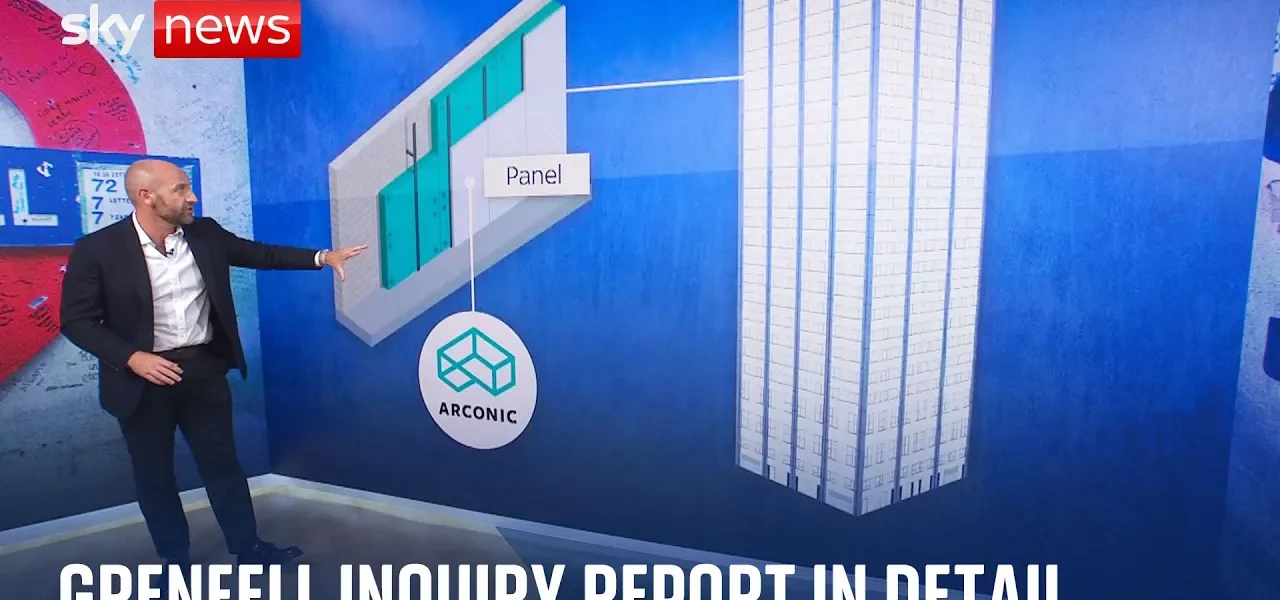The Grenfell Tower Inquiry Final Report: A Damning Account of Systemic Failures

This article delves into the findings of the Grenfell Tower Inquiry’s final report, which highlights critical failures in fire safety regulations, the roles of cladding manufacturers, and the lack of accountability at various levels of government.
Introduction
The Grenfell Tower fire, which occurred on June 14, 2017, remains a tragic event in the UK that exposed severe deficiencies in fire safety protocols and regulatory systems. The first inquiry report focused on the night of the blaze, scrutinizing the actions of the fire brigade and identifying the combustible cladding as a primary factor in the rapid spread of the fire. The subsequent final report, spanning nearly 1,700 pages, uncovers the systemic issues that allowed such a disaster to occur. This article explores the key findings of the report, emphasizing the roles of the cladding manufacturers, the complicit actions of regulatory bodies, and the government’s failures in ensuring public safety.
The Role of Cladding Manufacturers
Central to the inquiry’s findings is the role played by the companies that manufactured the cladding materials used on Grenfell Tower. The report details how these companies engaged in systematic dishonesty, ultimately prioritizing profits over safety.
1. Arconic
Arconic, an American firm, was responsible for producing the cladding panels for Grenfell Tower. The inquiry revealed that Arconic had a significant knowledge of the dangers associated with their product yet chose to conceal this information from the market.
2. Celotex
Celotex manufactured the insulation that lay behind the cladding panels. The report accused Celotex of misleading their customers and the wider market about the safety of their insulation products. Their actions contributed significantly to the fire’s rapid spread.
3. Kingspan
Kingspan also played a critical role in the insulation market for buildings over 18 meters in height. The inquiry found that from 2005 onwards, Kingspan knowingly created a false market, putting many lives at risk.
Summary of Manufacturer Failures
- Deliberate concealment of product dangers.
- Engagement in dishonest schemes to mislead customers.
- Creation of a false market for unsafe insulation products.
Complicity of Regulatory Bodies
The inquiry also scrutinized the role of the Building Research Establishment (BRE), which was supposed to be an independent tester of building materials. Instead, it was found that BRE compromised its integrity by accepting payments from cladding companies, prioritizing commercial interests over rigorous safety testing.
Consequences of Regulatory Failures
The report highlighted several consequences stemming from the BRE’s actions:
- Lack of independent testing led to unsafe products entering the market.
- Regulatory oversight was severely compromised, allowing dangerous materials to be used in buildings.
- Trust in safety regulations was eroded, endangering public safety.
Government’s Role and Accountability
The inquiry did not shy away from addressing the government’s role in the Grenfell disaster. It revealed a persistent indifference to fire safety within the Royal Borough of Kensington and Chelsea and its tenant management office.
1. Indifference to Safety
The inquiry pointed out that there was a consistent failure to prioritize the safety of vulnerable communities, particularly from 2010 onwards, during a period marked by a deregulatory agenda.
2. Government Complicity
Government officials were criticized for their lack of action in holding companies accountable, allowing the systemic failures to persist. The report illustrated how safety matters were often ignored or delayed.
Long-Term Impacts
The findings emphasized that the problems were not merely a result of a broken system but rather a system that was built on neglect:
- Endangerment of lives due to safety oversight.
- Failure to implement necessary regulations to protect residents.
- Long-lasting effects on community trust in governmental institutions.
Conclusion
The final report of the Grenfell Tower Inquiry paints a grim picture of systemic failures across various sectors, including manufacturers, regulatory bodies, and government institutions. The evidence presented highlights a need for urgent reform in building safety regulations and accountability structures to prevent such tragedies in the future. It is imperative for survivors and families of victims to see justice served and for the lessons learned from this tragedy to result in meaningful change. For those interested in understanding the intricacies of this inquiry further, we invite you to explore our related articles on building safety and regulatory reform.
Read more about building safety reforms and regulatory changes.
“`




